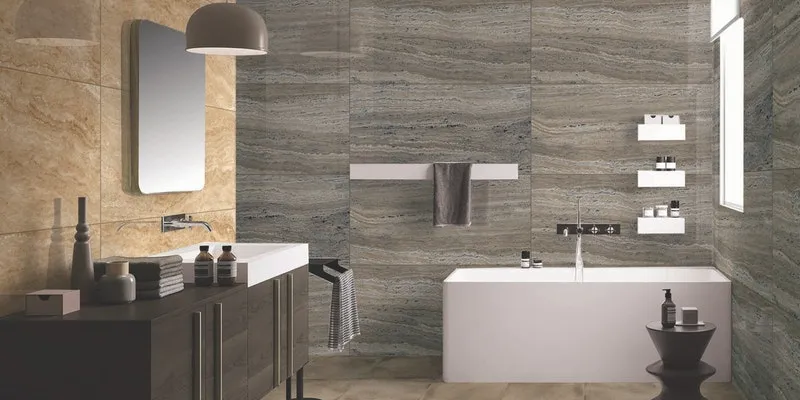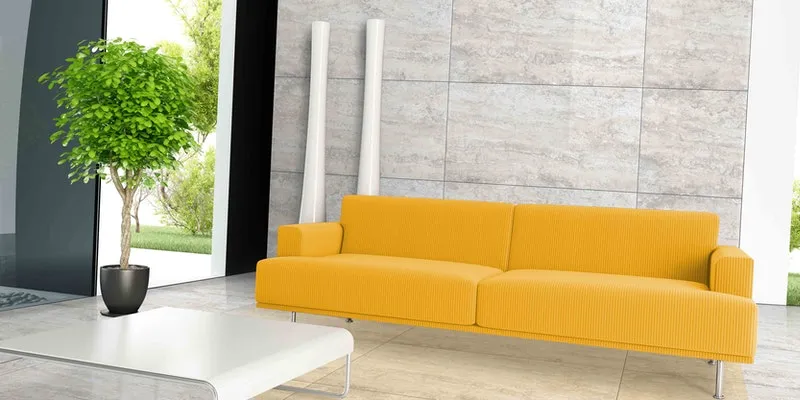This Delhi-based tiles company endured License Raj to clock over Rs 500 Cr turnover today
In the 1970s, Mahendra K Daga would spend up to 16 hours a day in the ministries to get approval for access to land, labour, water, oil, etc. Here’s how he fought his way through Licence Raj to build a Rs 500 crore tile company.

Mahendra K Daga, Founder & Chairman, Orient Bell Limited
Even though India got independence in 1947, its business ecosystem took a long time to fall in place. Entrepreneurship in the 1970s was totally different from what we see today. Then, it was the time of Licence Raj under which a defined quota was fixed for all manufacturers across the country, to limit their production capacity.
As an aspiring businessman, it took a lot of focus and passion for MK Daga to negotiate the speed-breakers along his path to success.
In an interaction with SMBStory, Alok Agarwal, Chief Marketing Officer, Orient Bell Limited (OBL), shares the entrepreneurial journey of MK Daga. He says,
“MK Daga initially wanted to get into manufacturing of bent glass. However, after noticing the vacuum in the sanitation industry, he thought of exploring the market. He visualised that the market would grow and put in all his efforts to set up a factory. Today, he is considered a pioneer in the tiles industry in India.”
Setting up the business was not easy for MK Daga. There was a fixed quota to manufacture tiles. Getting access to land, labour, water, oil, and electricity was a challenge. He used to spend up to 16 hours a day in the ministries for approval.
In 1977, MK Daga founded OBL in New Delhi from his personal savings and went on to build a company of Rs 571.14 crore turnover.
Edited excerpts from the interview:
SMBStory: How did OBL start?
Alok Agarwal: Post-liberalisation (end of Licence Raj in 1991), the volume of production in every industry increased. The quality standards also improved. However, the sanitation industry was not much looked upon. With constant efforts, MK Daga created awareness among people on the importance of sanitation.
In the last four decades, through experience, love and loyalty of our customers, we have become one of the largest manufacturers of ceramic and vitrified tiles. OBL is widely respected in the industry circles as a trusted and professional manufacturer of wall and floor tiles.
It has a chain of signature showrooms to display its complete product range and is privileged to be associated with the premier architects and builders of the country.
It has in the recent past seen an influx of new talent and leadership that’s bringing a breath of fresh air in the building and construction industry. OBL is listed in the stock exchange for more than 20 years now.
The company sources all the raw materials locally for manufacturing and procures a few ink colours from Italy and Spain.

OBL's classic bronze bathroom tiles
SMBS: How did the company diversify into so many categories?
AA: We kept on developing tiles to meet specific customer requirements. Germ free tiles were developed to cater to hospitals, schools, airports and food services, where tiles with anti-microbial properties were required.
Cool tiles were developed to keep indoor temperatures at six to 10 degree Celsius cooler in geographies where high temperatures prevail in summer. Tiles were produced for service stations, gymnasiums and industrial establishments that needed high scratch resistance.
Our Glazed Vitrified tiles (GVT) or ceramic tiles are available in a huge assortment of sizes, colours and SKUs to meet the needs of the diverse Indian consumers.
SMBS: What are the key milestones in your journey and how are you different from your competitors?
AA: After the inception, the biggest milestone has been listing the company on the stock exchange. It has shaped our intrinsic focus on transparency and corporate governance. Today, we are amongst the first few companies in the tile industry to publish our quarterly results.
In 2004, the company got its first ISO 9001 and OHSAS. This was way ahead of other industry players. And it reflects our core beliefs of quality and employee safety.
In 2005, we opened our first OBL Boutique. Today, we have more than 150 boutiques across the country. These are exclusive stores where we try and ensure great retail experiences for our shoppers.
From early 2018, OBL has seen an influx of new talent. This has driven multiple new product launches as well as digital solutions to remove friction points in the consumer purchase journey. In fact, this year kicked off pretty well with OBL winning awards at Realty+ Award 2020 for the best website as well as the most “Integrated Marketing Campaign”.
The tile market is a Rs 28,000 crore industry. Organised brands control 30 percent of the market and there is an opportunity to address customer friction-points and further build the sector.
OBL brings a unique solution approach to its retail as well as B2B customers. For example, our retail shoppers share layouts and laying patterns for tiles chosen by them using a quick and easy visualisation software. On the other hand, our B2B customers get customised layouts from us at zero cost.
Some of the largest automotive brands buy tiles from us because of the importance they attach to ensuring a consistent look and feel in all their showrooms across India. Similarly, retail brands, keen on delivering a consistent brand image, approach us.

OBL's travertine grey living room tiles
SMBS: What are the major challenges the company faces?
AA: The industry is a key supplier to the building and construction space – a sector which has been a clear underperformer for quite some time now. Real demand drivers are still missing and the coronavirus lockdown will aggravate a tough situation. There are several challenges like GST on power and fuel.
Even after two-and-a-half-years of GST rollout, power and fuel which is roughly 30 to 40 percent of the cost base for heavy industries, is still outside the GST ambit resulting in cascading of taxes and thus higher costs for the end consumer.
Despite the welcome step of reduction in GST for the real estate sector last year, the absence of input credit mechanism for taxes paid against raw material supplies makes the entire system inefficient and may result in leakages for the exchequer. Availability of input credits should still make housing more affordable while arresting the potential malpractices.
SMBS: What are your future prospects?
AA: We have a reach of over 2,500 channel partners all over India. And this reach is continuously growing in the width of the market it covers and the depth of products they carry.
We are stronger in the north and eastern parts of India and have plans to expand in other parts of the country.
(Edited by Javed Gaihlot)









